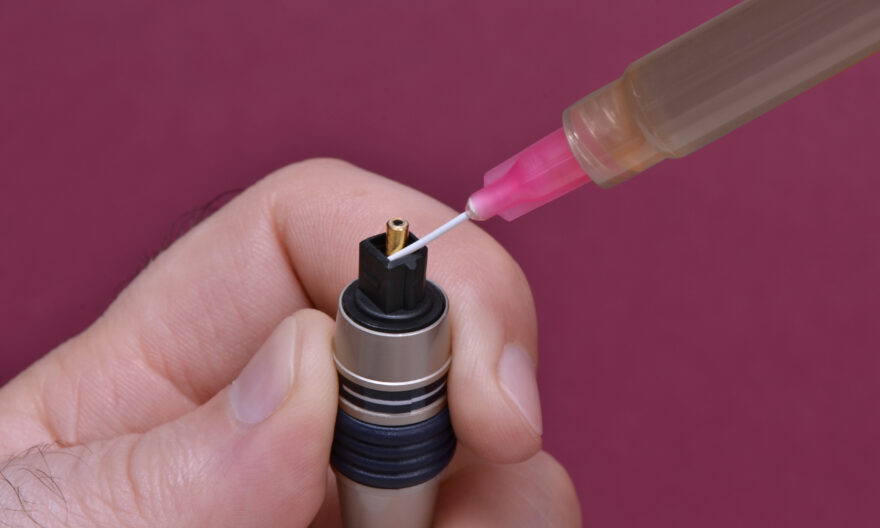
When you build or fix machines or electronics, heat shows up. Heat can harm tiny parts. It can make things stop working. That’s where thermally conductive epoxy jumps in. It holds parts together and moves the heat away.
But not every epoxy works the same. You must find the one that fits your job. In this guide, we will help you pick the right one. We will explain what to check and how to choose smartly.
What Is Thermally Conductive Epoxy?
A thermally conductive epoxy sticks two things together and helps heat escape. It carries the heat from one side to another. It stops heat from getting stuck inside.
It has tiny pieces inside it, like silver, aluminium, or ceramic. These bits grab the heat and move it fast. Normal glue can’t do this.
People use this epoxy in lights, cars, computers, and big machines. It goes in places where fans or vents can’t go. It makes heat travel out in a safe and simple way.
Why Should You Use It?
When parts like chips or lights get hot, they slow down or break. A thermally conductive epoxy grabs the heat and pushes it away.
It also makes things stay in place. You don’t need clips or screws. Once it dries, it stays strong. It helps your work last longer. It makes your devices safe.
What to Check Before You Choose
You need to look at a few things before picking your epoxy. Let’s go over the most important ones.
1. Thermal Conductivity
This tells how fast the epoxy moves heat. People use numbers like W/mK to show it.
Low heat parts like small lights don’t need high numbers. But big power tools do. Always look at how hot your parts get. Then choose the epoxy that fits.
Some have metal bits inside. These carry heat fast. Others use ceramic, which works but is not as fast.
2. Electric Flow or No Flow
Some epoxies let electricity pass. Others block it. You must know what your part needs.
If wires or boards sit close, you need an epoxy that blocks electric flow. That keeps it safe. But if you want the epoxy to help electricity move, pick one that lets it flow.
3. Curing Method
Curing means how the epoxy gets hard. Some dry at room temperature. Some need extra heat to dry.
Think about your space. Can you use heat? Or do you need it to dry on its own?
Also, some epoxies dry fast. Some take more time. Pick one that gives you time to place it right, but not too long.
4. How Strong It Sticks
The epoxy must stick well. It must hold the parts tight, even when they get hot or shake.
Some stick well to metal. Some to plastic. Some to glass. Pick one that fits your material.
Also, find one that won’t snap when your device moves or bends.
5. Hot and Cold Strength
Machines get hot and cold again and again. The epoxy must not crack or melt when this happens.
Many epoxies stay strong from -40°C to 150°C. Some go even higher. Know how hot or cold your part gets. Pick the epoxy that can handle it.
6. Thick or Thin
Some epoxies are runny. Others are thick like jam. Thin ones slide into small spaces. Thick ones stay where you place them.
Do you want the epoxy to spread or stay still? Do you brush it on, or use a small tube? Pick one that fits how you work.
Where People Use Thermally Conductive Epoxy
Let’s look at where this epoxy helps most.
Electronics
Chips and boards get hot. This epoxy pulls heat away from chips and sends it to the base. That keeps the chip cool.
LED Lights
LEDs get warm when they shine. If they get too hot, they stop working. Epoxy under the light base helps move the heat out.
Cars
Car parts like sensors or batteries heat up. This epoxy helps them stay cool. It also keeps parts from moving when the car shakes.
Medical Tools
Doctors use machines that must work all day. These machines need safe, steady parts. The epoxy helps keep them cool and working right.
Big Machines
Heavy tools in factories also get hot. This epoxy moves the heat out and keeps the tools safe.
How You Know It Works
You can tell you chose right if:
- The epoxy dries in the time you planned.
- It sticks tightly to your parts.
- Your parts stay cool when you turn them on.
- You don’t see cracks or soft spots.
Tips for Good Use
Here are some ways to make your job better:
- Mix the epoxy well if it has two parts.
- Wipe your parts clean before you start.
- Spread it smooth and press it firmly.
- Don’t let air bubbles stay inside.
- Keep leftover epoxy cool and closed tightly.
If you rush or skip these steps, even the best epoxy won’t help. Take your time and do it right.
What Makes Some Epoxies Stand Out
Some epoxies do better than others. They may have higher heat power or better stick. They may work better in tough places like space or hospitals.
If you need your work to last, it helps to look for one that others trust. Ask people in your field what they use. Check papers and charts. Find the one that fits your task.
Conclusion
Choosing the right Epotek thermally conductive epoxy helps protect your devices, control heat, and keep everything running smoothly. Before picking one, think about heat levels, materials, strength, and how you plan to apply it.
Make sure it sticks well, handles the right temperatures, and fits your project’s needs. Whether you’re building lights, fixing machines, or working with electronics, the right epoxy makes a big difference.
Don’t choose in a hurry. Read the details, try a small bit first and pick the one that fits best. The right epoxy keeps your work strong, safe, and built to last.. Always match the epoxy to the job, not just the label. That’s how you get the best results.



